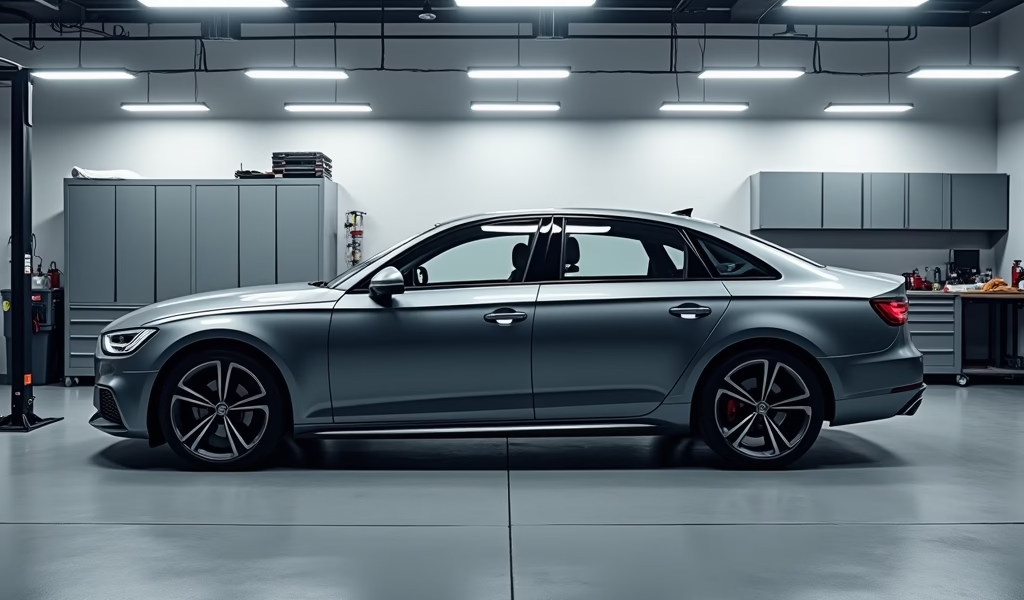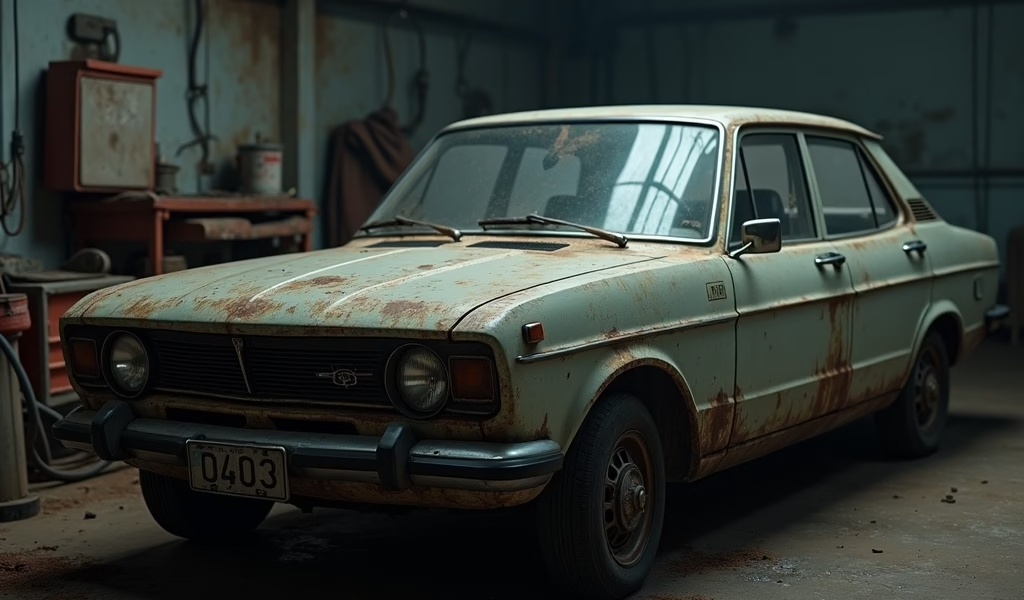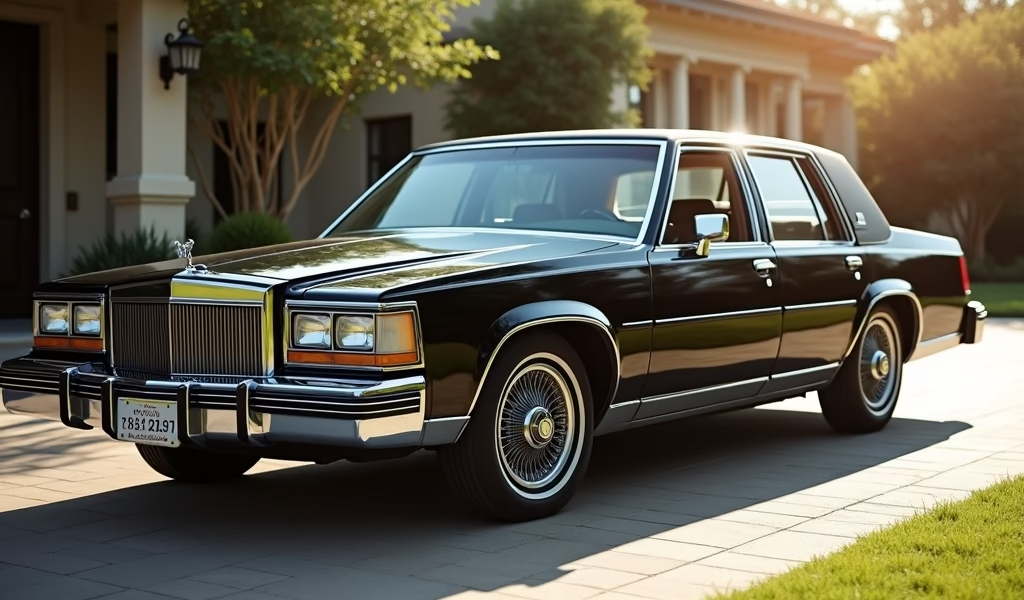Overview
This article outlines seven essential treatments for revitalizing a used saloon car, including deep cleaning, upholstery maintenance, mechanical inspection, electrical system checks, exterior rejuvenation, interior revival, and complete fluid replacement. Each treatment not only improves the car’s appearance and functionality but also protects the investment by addressing both visible issues and potential hidden problems that could lead to costly repairs.
Table of Contents
- Deep Cleaning and Sanitization: The Clean Slate Approach
- Upholstery Maintenance: Restoring Comfort and Class
- Mechanical Inspection: Under the Hood Essentials
- Electrical Systems: Rewiring Your Ride’s Nervous System
- Exterior Rejuvenation: First Impressions Matter
- Interior Revival: Creating Your Comfort Zone
- Complete Fluid Flush: Lifeblood of Your Saloon
- Conclusion: Your Saloon’s Second Chance
- Frequently Asked Questions
There’s something undeniably charming about a well-maintained used saloon car. Like a tailored suit that’s found its second owner, these elegant four-doors carry stories while offering tremendous value for the discerning driver. But like any pre-loved treasure, a used saloon requires careful attention to truly shine again. As someone who’s had grease under my fingernails for three decades, I’ve seen neglected beauties transform into road royalty with the right care.
Whether you’ve just brought home your bargain BMW or rescued a retired Rover, these seven essential treatments will breathe new life into your used saloon while protecting your investment for years to come. Let’s pop the hood on proper care, shall we?
Deep Cleaning and Sanitization: The Clean Slate Approach
Every used saloon deserves a fresh start. Think of a deep cleaning as wiping the slate clean—removing not just the visible grime but the invisible history that clings to every surface. A proper deep clean addresses both hygiene and preservation, setting the foundation for all other treatments.
Begin with the interior, using a methodical approach:
- Remove and clean floor mats separately
- Vacuum thoroughly, including under seats and in hard-to-reach crevices
- Use appropriate cleaners for different surfaces (fabric, leather, plastic)
- Steam clean upholstery to eliminate embedded odors
- Disinfect high-touch areas like steering wheels, door handles, and control buttons
For the exterior, consider it your car’s exfoliation treatment:
- Pre-rinse to remove loose debris
- Hand wash with pH-neutral automotive soap
- Clay bar treatment to remove embedded contaminants
- Clean wheels and wheel wells where brake dust accumulates
Don’t forget what I call the “forgotten zones”—those areas previous owners likely neglected: door jambs, trunk gaskets, and engine bay. A thorough cleaning here prevents premature deterioration and removes lingering odors that might otherwise puzzle you for months.
As Consumer Reports points out, proper interior cleaning not only makes your car more pleasant but can help maintain its value over time.
Upholstery Maintenance: Restoring Comfort and Class
The seats in your saloon are like faithful companions on every journey—they deserve special attention. Used saloon upholstery often tells tales of coffee spills, sunshine fading, and the daily friction of life. Reviving these surfaces transforms not just appearance but the entire driving experience.
For leather upholstery, think of it as skin care for your car:
- Clean with dedicated leather cleaner
- Treat cracks and wear with leather conditioner
- Address scuffs and minor damage with color-matched repair kits
- Apply leather protectant to prevent future damage
Fabric upholstery requires a different approach:
- Spot-clean stains immediately before they set
- Use fabric-specific cleaners that won’t leave residue
- Consider professional extraction for deep-set stains
- Apply fabric protector to guard against future spills
The magic happens in the details. Those worn bolsters on driver’s seats speak volumes about a car’s history. A professional reupholstery service can work wonders for severely damaged areas, while DIY repair kits can address minor issues. Remember—your upholstery isn’t just about looks; it’s about preserving the structural integrity of your seats.
Consider this investment like restoring a vintage piece of furniture—done right, it transforms both comfort and value while honoring the original craftsmanship of your saloon.

Mechanical Inspection: Under the Hood Essentials
The beating heart of your used saloon deserves a thorough check-up before settling into its new life with you. Like a doctor examining a patient with a complex history, a methodical mechanical inspection reveals both obvious symptoms and hidden conditions that could spell trouble down the road.
Start with these crucial systems:
- Engine: Check for leaks, unusual noises, and proper performance
- Transmission: Assess shift quality and fluid condition
- Brakes: Inspect pads, rotors, and hydraulic components
- Suspension: Test for proper damping and unusual noises
- Steering: Verify responsiveness and alignment
Don’t let smooth operation fool you—some issues lurk beneath the surface like silent predators. Timing belts, for instance, show no symptoms before catastrophic failure. Check maintenance records or err on the side of replacement if the history is murky. The same applies to water pumps and other wear items with predictable lifespans.
Consider investing in a professional inspection before purchase or immediately after. A trained eye can spot issues that might escape even the most diligent amateur. As AAA recommends, regular fluid level checks should become part of your ownership routine to catch developing issues early.
Remember, a used saloon’s mechanical condition isn’t just about what’s working today—it’s about forecasting reliability for years to come. Addressing small issues proactively prevents them from cascading into costly failures, much like treating a small cavity prevents the need for a root canal.
Electrical Systems: Rewiring Your Ride’s Nervous System
Modern saloons are rolling computers, with electrical systems as complex as they are critical. The spaghetti-like wiring beneath dashboards and body panels forms the nervous system that controls everything from essential safety features to convenience luxuries.
Begin with a systematic check of these electrical components:
- Battery: Test voltage and load capacity, not just visual inspection
- Charging system: Verify alternator output meets specifications
- Lighting: Check all exterior and interior lights for proper function
- Sensors: Scan for error codes even if warning lights aren’t illuminated
- Climate control: Test heating, cooling, and blower motor operation
Electrical gremlins in used saloons often masquerade as intermittent issues—those frustrating problems that vanish when you visit the mechanic. Document any peculiar behavior meticulously. That occasional dashboard flicker or window hesitation might seem minor but could indicate impending electrical failure.
Pay special attention to luxury features. Power seats, sunroofs, and advanced infotainment systems add tremendous value when working—and substantial repair costs when they fail. Test every button, switch, and feature thoroughly.
Connections are the weak point in automotive electrical systems. Corrosion at battery terminals or ground points can mimic more serious problems. A thorough cleaning of connections often resolves issues that might otherwise lead to unnecessary parts replacement.
If your second-hand car has aftermarket modifications, approach with caution. Amateur electrical installations often bypass factory safeguards, creating fire risks or battery drain. Consider having these modifications professionally evaluated or returned to factory specification.
Exterior Rejuvenation: First Impressions Matter
Your saloon’s exterior is its calling card—the first thing others notice and often a reflection of the care it receives. Beyond aesthetic appeal, the exterior serves as crucial armor against the elements. Restoring this protective barrier preserves both beauty and structural integrity.
Paint correction forms the cornerstone of exterior rejuvenation:
- Washing and decontamination removes embedded particles
- Polishing addresses light scratches and oxidation
- Compounding tackles deeper imperfections
- Protective coating (wax, sealant, or ceramic) provides lasting defense
Think of paint correction as turning back the clock on your car’s complexion. Like a facial for your vehicle, it removes the accumulated damage of UV exposure, environmental contaminants, and improper washing techniques.
Don’t overlook these critical exterior elements:
- Trim restoration: Faded plastic trim can be revived with specialized products
- Glass treatment: Water repellent coatings improve visibility during rain
- Wheel refinishing: Curb rash and corrosion can often be addressed without replacement
- Headlight restoration: Cloudy lenses reduce visibility and detract from appearance
Rust demands immediate attention. Like cancer in the human body, corrosion spreads aggressively once established. Small rust spots can often be treated DIY-style, but structural rust requires professional intervention.
Consider the investment in exterior care as both aesthetic and protective. A properly sealed exterior not only turns heads but also shields your saloon from environmental damage that accelerates depreciation.

Interior Revival: Creating Your Comfort Zone
The cabin of your saloon is where you’ll spend countless hours—a space that should welcome rather than weary. Interior revival transforms this environment from someone else’s leftover space into your personal sanctuary. It’s where science meets sensory experience.
Address these key interior elements:
- Dashboard and trim: Clean, condition, and protect based on material type
- Headliner: Clean stains and address sagging with appropriate techniques
- Carpeting: Deep clean, extract stains, and protect against future soiling
- Climate system: Clean vents and replace cabin air filter to improve air quality
Odor elimination requires identifying sources rather than masking smells. Previous owners may have left their olfactory signature through smoking, pets, or food spills. Ozone treatment provides a nuclear option for stubborn odors, penetrating areas that cleaning alone can’t reach.
Technology integration breathes new life into older saloons. Consider tasteful upgrades that preserve the car’s character while adding modern convenience:
- Bluetooth integration for hands-free calling and music streaming
- USB charging ports for devices
- Updated navigation options when factory systems become outdated
The tactile experience matters immensely. A worn steering wheel or shifter communicates neglect with every touch. Specialized wraps and covers can restore these high-contact surfaces when replacement isn’t practical.
Remember that interior revival isn’t just cosmetic—it’s functional. Clear visibility through clean glass, accessible controls, and ergonomic adjustments contribute to both comfort and safety. As ergonomics experts emphasize, a comfortable driver is a safer driver.
Complete Fluid Flush: Lifeblood of Your Saloon
Fluids are the unsung heroes of automotive health—the lifeblood that keeps mechanical systems functioning smoothly. In used saloons, these vital liquids often harbor secrets about past maintenance (or its absence). A complete fluid overhaul provides both peace of mind and tangible performance benefits.
These critical systems deserve fresh fluids:
- Engine oil and filter: The most fundamental maintenance item
- Transmission fluid: Often neglected but crucial for smooth operation
- Cooling system: Flush and replace with proper antifreeze mixture
- Brake fluid: Hygroscopic properties mean it absorbs moisture over time
- Power steering fluid: Often forgotten until problems develop
- Differential/transfer case fluid: Critical for AWD and RWD saloons
Consider fluid replacement as both preventative maintenance and diagnostic tool. Fresh fluids protect components, while the condition of old fluids tells tales about internal health. Metal flakes in transmission fluid or a milky appearance in engine oil signals problems requiring further investigation.
Don’t be swayed by claims of “lifetime fluids.” This marketing terminology rarely holds up to real-world conditions, especially in older vehicles. Even the best fluids break down over time, losing their protective properties. The modest investment in fresh fluids pales in comparison to the cost of component failure.
Keep a meticulous record of your fluid services, creating a maintenance baseline for your ownership. This documentation not only guides future service intervals but enhances resale value by demonstrating proper care.
For the environmentally conscious, remember that used automotive fluids require proper disposal. Most auto parts retailers accept used oil and other fluids for recycling—a responsible approach that protects both your car and our planet.
Conclusion: Your Saloon’s Second Chance
A used saloon isn’t just transportation—it’s a canvas waiting for your personal touch and a mechanical system eager for renewed care. By implementing these seven essential treatments, you transform a pre-owned vehicle into a personalized chariot that delivers safety, reliability, and pride of ownership.
Remember that this process need not happen overnight. Prioritize safety-critical items first, then address comfort and aesthetics as time and budget allow. The journey of restoration is itself rewarding—each improvement building upon the last to create a saloon that feels increasingly yours.
The wisdom of caring for used cars lies in recognizing their inherent value. Behind the previous ownership and accumulated miles stands automotive craftsmanship worthy of preservation. Your saloon’s second chance brings with it the satisfaction of extending both the vehicle’s life and your automotive budget.
As your used saloon responds to these treatments with improved performance and appearance, you’ll discover the unique pleasure that comes from breathing new life into a machine with history. Drive it in good health, maintain it with diligence, and enjoy the road ahead in your rejuvenated saloon.
Frequently Asked Questions
How often should I detail my used saloon?
A thorough interior and exterior detail should be performed quarterly, with more frequent light cleaning as needed. This schedule prevents buildup of contaminants while maintaining protective coatings.
Is it worth fixing minor cosmetic issues on a used saloon?
Yes, addressing minor cosmetic issues prevents them from worsening and maintains resale value. Small investments in appearance preservation typically return their value several times over.
How can I tell if my used saloon needs transmission fluid changed?
Check the fluid color (should be clear red, not brown or black) and smell (should not have a burnt odor). If you experience delayed engagement, slipping gears, or shuddering, these are signs that service is overdue.
What’s the most important maintenance for a high-mileage saloon?
Regular oil changes with high-quality oil designed for higher mileage engines are crucial. This provides enhanced protection against wear and can help reduce oil consumption in older engines.
How can I remove lingering odors from a used saloon?
Remove the source of the odor first, then clean all surfaces thoroughly, including under seats and inside vents. For persistent odors, consider professional ozone treatment which neutralizes rather than masks smells.

